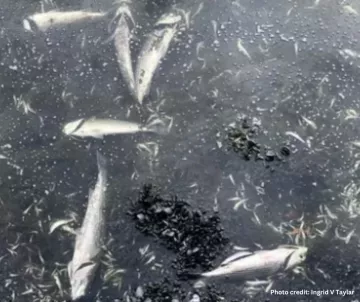What's happening

The unprecedented harmful algal bloom (HAB) of 2022 was the type of event researchers working on the Bay’s nutrient issue had long feared. The San Francisco Bay is one of the most highly urbanized estuaries in the world, one consequence of this being increased nutrients that can feed harmful algae. Nitrogen and phosphorus are the nutrients key concern in this issue, and are found in the discharges of treated wastewater from the 37 treatment facilities around the Bay.
Why it matters
The impacts of HABs on watersheds can be catastrophic to water quality, ecological health, critters, and surrounding communities. In our region many rely on the Bay’s health for recreation, economic opportunity, and ecosystem benefits like protection from flooding, etc. Our watershed is also home to many endangered and threatened species that are likely more vulnerable to reduced dissolved oxygen and toxins.
What's next
Currently, there are no caps or concrete mandates for nutrient reduction in the wastewater permit from the Regional Water Quality Control Board. It is critical that we encourage the RWQCB to implement caps in the upcoming wastewater permit set to be introduced in Spring 2024. Additionally, advocating for the Regional Water Board to outline reduction limits in future permits and articulate enforcement of these limits is critical. Working directly with treatment facilities is a critical piece in meeting necessary reductions. Many facilities have already begun planning and implementing increased treatment to address this issue, but it’s important that all dischargers have long term plans and implementation strategies in place.
How you can help
You can help this issue by becoming an advocate for nutrient reduction at the Regional Water Board or at your local wastewater treatment facility. Sierra Club will also continue to share opportunities for engagement.